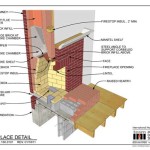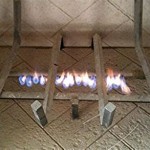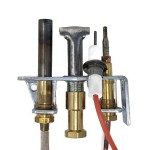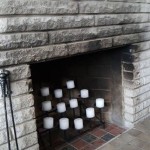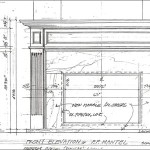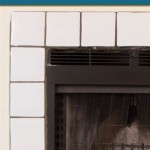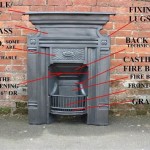Installation Guide: Direct Vent Fireplace
A direct vent fireplace offers a modern and efficient heating solution for residential properties. Unlike traditional wood-burning fireplaces, direct vent models extract combustion air from outside the home and vent exhaust gases directly back outdoors through a sealed system. This design eliminates the need for a conventional chimney, offering greater flexibility in placement and enhancing energy efficiency. Installation, however, requires careful planning and adherence to manufacturer specifications and local building codes.
### Pre-Installation Considerations and PlanningBefore commencing the installation of a direct vent fireplace, a thorough assessment of the installation site is paramount. This evaluation involves identifying potential obstructions, evaluating structural support, and confirming compliance with building codes and regulations. Consult with local building officials to ensure all permits are obtained prior to beginning any work.
A critical aspect of pre-installation planning is determining the appropriate fireplace size and heat output for the intended space. Overestimating or underestimating heating requirements can lead to discomfort and inefficient energy consumption. Calculating the square footage of the room and factoring in insulation levels, window quantity, and climate conditions will assist in selecting the optimal fireplace model. Reviewing manufacturer specifications for British Thermal Units (BTUs) and heating area coverage is essential. Most manufacturers provide detailed sizing guidelines in their product manuals.
The proper venting configuration is another crucial element to consider. Direct vent fireplaces typically offer both horizontal and vertical venting options. The choice depends on the fireplace location and the surrounding structure. Horizontal venting requires a direct path to an exterior wall, while vertical venting necessitates routing the vent pipe through the roof. Planning the vent run meticulously is necessary to minimize bends and ensure optimal draft. Consult the manufacturer's venting instructions for allowable vent lengths and maximum bend limits. Incorrect venting configurations can result in performance issues and safety hazards.
Furthermore, assessing the availability of necessary utilities, such as gas and electricity, is vital. A gas line will need to be run to the fireplace location and a dedicated electrical circuit may be required for the ignition system and blower motor. Engaging licensed professionals for gas line connections and electrical wiring is strongly recommended to ensure code compliance and prevent safety risks.
### Step-by-Step Installation ProcessThe installation process typically involves several steps, including preparing the fireplace enclosure, installing the venting system, connecting the gas supply, and wiring the electrical components. Detailed instructions are generally provided by the fireplace manufacturer and should be followed meticulously. Deviation from these instructions can compromise the safety and performance of the fireplace.
The fireplace enclosure, or firebox, provides a secure and aesthetically pleasing housing for the fireplace unit. The construction of the enclosure may involve framing with wood or metal studs, followed by the application of non-combustible materials such as cement board or fire-rated drywall. Ensure that the dimensions of the enclosure accommodate the fireplace unit and allow for proper clearances as specified by the manufacturer. Maintaining adequate clearances from combustible materials is essential to prevent fire hazards.
Installing the venting system requires careful attention to detail. Assemble the vent pipes according to the manufacturer's instructions, ensuring proper sealing at each joint. Use approved pipe sealants or gaskets to create a tight, leak-proof connection. Secure the vent pipes to the structure using appropriate supports and hangers. When routing the vent pipe through walls or ceilings, maintain proper clearances from combustible materials and use approved firestops to prevent the spread of fire.
Connecting the gas supply should only be performed by a qualified gas technician. The technician will run a gas line from the main gas supply to the fireplace location and install a shut-off valve for safety. The gas line must be properly sized to provide adequate gas pressure to the fireplace. A leak test should be performed after connecting the gas line to ensure there are no leaks. Never attempt to connect the gas supply without proper training and certification.
Wiring the electrical components involves connecting the fireplace unit to a dedicated electrical circuit. This task should be performed by a qualified electrician. The electrician will connect the power cord to the electrical outlet and ensure that the wiring complies with local electrical codes. A ground fault circuit interrupter (GFCI) outlet is often required for added safety. Verify the electrical connections are secure and properly insulated.
### Post-Installation Testing and MaintenanceAfter completing the installation, thorough testing and inspection are necessary to ensure the fireplace is operating safely and efficiently. This process involves verifying the ignition system, checking for gas leaks, and observing the flame pattern. The fireplace should ignite smoothly and burn with a clean, blue flame. Any unusual odors or noises should be investigated immediately.
A gas leak test should be conducted using a gas leak detector or a soap and water solution. Apply the solution to all gas connections and check for bubbles, which indicate a leak. If a leak is detected, immediately shut off the gas supply and contact a qualified gas technician to repair the leak before operating the fireplace.
Regular maintenance is essential to prolong the life of the fireplace and maintain its optimal performance. This includes cleaning the glass front with a non-abrasive cleaner, inspecting the venting system for obstructions, and checking the burner for debris. The frequency of maintenance depends on the fireplace usage and environmental conditions.
Annually, a qualified technician should inspect the fireplace and venting system. The technician will clean the burner, inspect the gas valve, and check the vent connections. This professional maintenance helps to identify and address any potential issues before they become serious problems. Following the manufacturer's recommended maintenance schedule is crucial for ensuring the safe and efficient operation of the fireplace.

What Is A Direct Vent Fireplace Fireplaces Learning Center

If You Have A Gas Fireplace It May Or Not Chimney Flue
Gas Fireplace Venting Explained Heat Glo
Gas Fireplace Venting Explained Heat Glo

Vented Vs B Vent Direct Free Dixie S

How To Select And Install A Gas Fireplace Log Set Fireplaces Direct Learning Center

Direct Vent Vs Natural Www Mygasfireplacerepair Com

Direct Vent Fireplace Installation Efireplace Com

How To Install A Fireplace Insert Diy Save Money
.aspx?strip=all)
Benefits Of Direct Vent Fireplaces Regency Fireplace S

